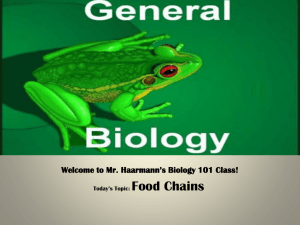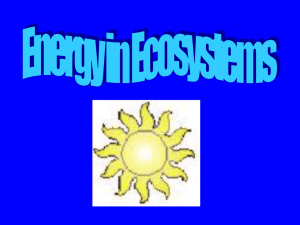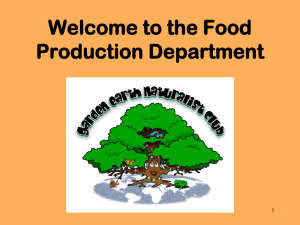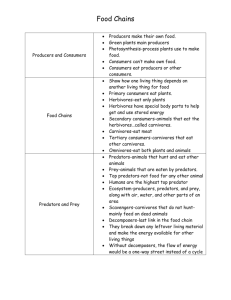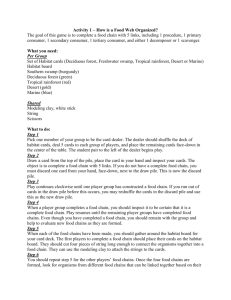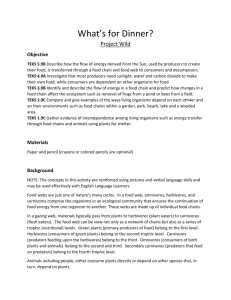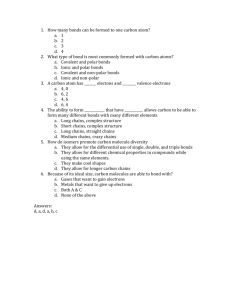Session A - Hamilton Trust
advertisement
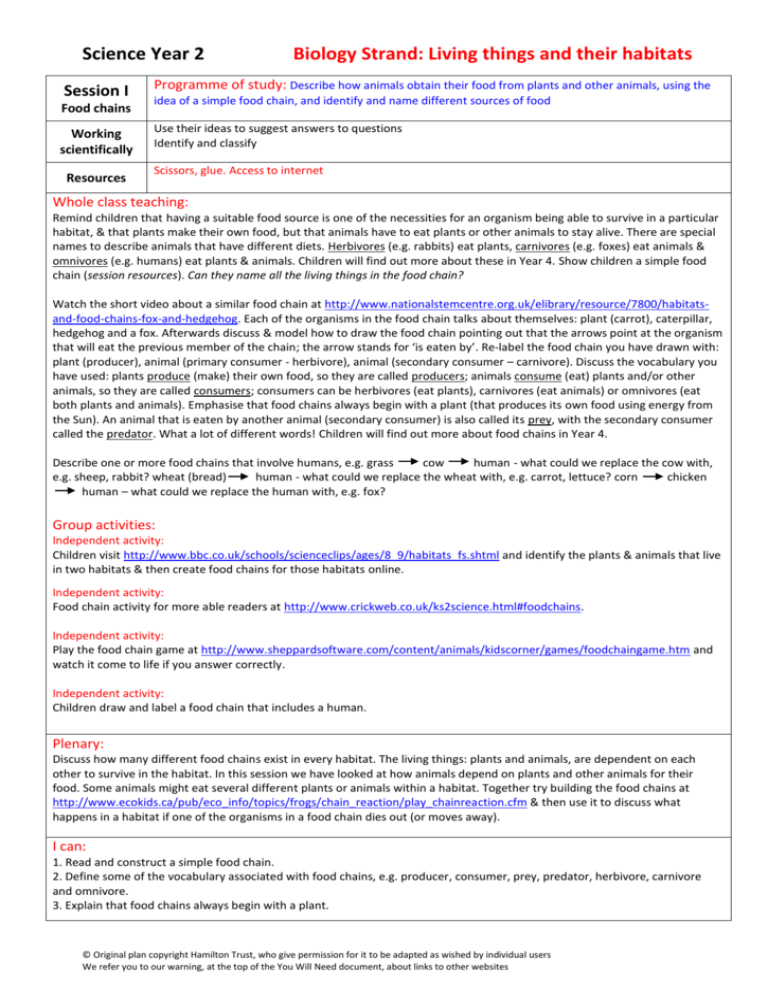
Science Year 2 Session I Food chains Working scientifically Resources Biology Strand: Living things and their habitats Programme of study: Describe how animals obtain their food from plants and other animals, using the idea of a simple food chain, and identify and name different sources of food Use their ideas to suggest answers to questions Identify and classify Scissors, glue. Access to internet Whole class teaching: Remind children that having a suitable food source is one of the necessities for an organism being able to survive in a particular habitat, & that plants make their own food, but that animals have to eat plants or other animals to stay alive. There are special names to describe animals that have different diets. Herbivores (e.g. rabbits) eat plants, carnivores (e.g. foxes) eat animals & omnivores (e.g. humans) eat plants & animals. Children will find out more about these in Year 4. Show children a simple food chain (session resources). Can they name all the living things in the food chain? Watch the short video about a similar food chain at http://www.nationalstemcentre.org.uk/elibrary/resource/7800/habitatsand-food-chains-fox-and-hedgehog. Each of the organisms in the food chain talks about themselves: plant (carrot), caterpillar, hedgehog and a fox. Afterwards discuss & model how to draw the food chain pointing out that the arrows point at the organism that will eat the previous member of the chain; the arrow stands for ‘is eaten by’. Re-label the food chain you have drawn with: plant (producer), animal (primary consumer - herbivore), animal (secondary consumer – carnivore). Discuss the vocabulary you have used: plants produce (make) their own food, so they are called producers; animals consume (eat) plants and/or other animals, so they are called consumers; consumers can be herbivores (eat plants), carnivores (eat animals) or omnivores (eat both plants and animals). Emphasise that food chains always begin with a plant (that produces its own food using energy from the Sun). An animal that is eaten by another animal (secondary consumer) is also called its prey, with the secondary consumer called the predator. What a lot of different words! Children will find out more about food chains in Year 4. Describe one or more food chains that involve humans, e.g. grass cow human - what could we replace the cow with, e.g. sheep, rabbit? wheat (bread) human - what could we replace the wheat with, e.g. carrot, lettuce? corn chicken human – what could we replace the human with, e.g. fox? Group activities: Independent activity: Children visit http://www.bbc.co.uk/schools/scienceclips/ages/8_9/habitats_fs.shtml and identify the plants & animals that live in two habitats & then create food chains for those habitats online. Independent activity: Food chain activity for more able readers at http://www.crickweb.co.uk/ks2science.html#foodchains. Independent activity: Play the food chain game at http://www.sheppardsoftware.com/content/animals/kidscorner/games/foodchaingame.htm and watch it come to life if you answer correctly. Independent activity: Children draw and label a food chain that includes a human. Plenary: Discuss how many different food chains exist in every habitat. The living things: plants and animals, are dependent on each other to survive in the habitat. In this session we have looked at how animals depend on plants and other animals for their food. Some animals might eat several different plants or animals within a habitat. Together try building the food chains at http://www.ecokids.ca/pub/eco_info/topics/frogs/chain_reaction/play_chainreaction.cfm & then use it to discuss what happens in a habitat if one of the organisms in a food chain dies out (or moves away). I can: 1. Read and construct a simple food chain. 2. Define some of the vocabulary associated with food chains, e.g. producer, consumer, prey, predator, herbivore, carnivore and omnivore. 3. Explain that food chains always begin with a plant. © Original plan copyright Hamilton Trust, who give permission for it to be adapted as wished by individual users We refer you to our warning, at the top of the You Will Need document, about links to other websites
